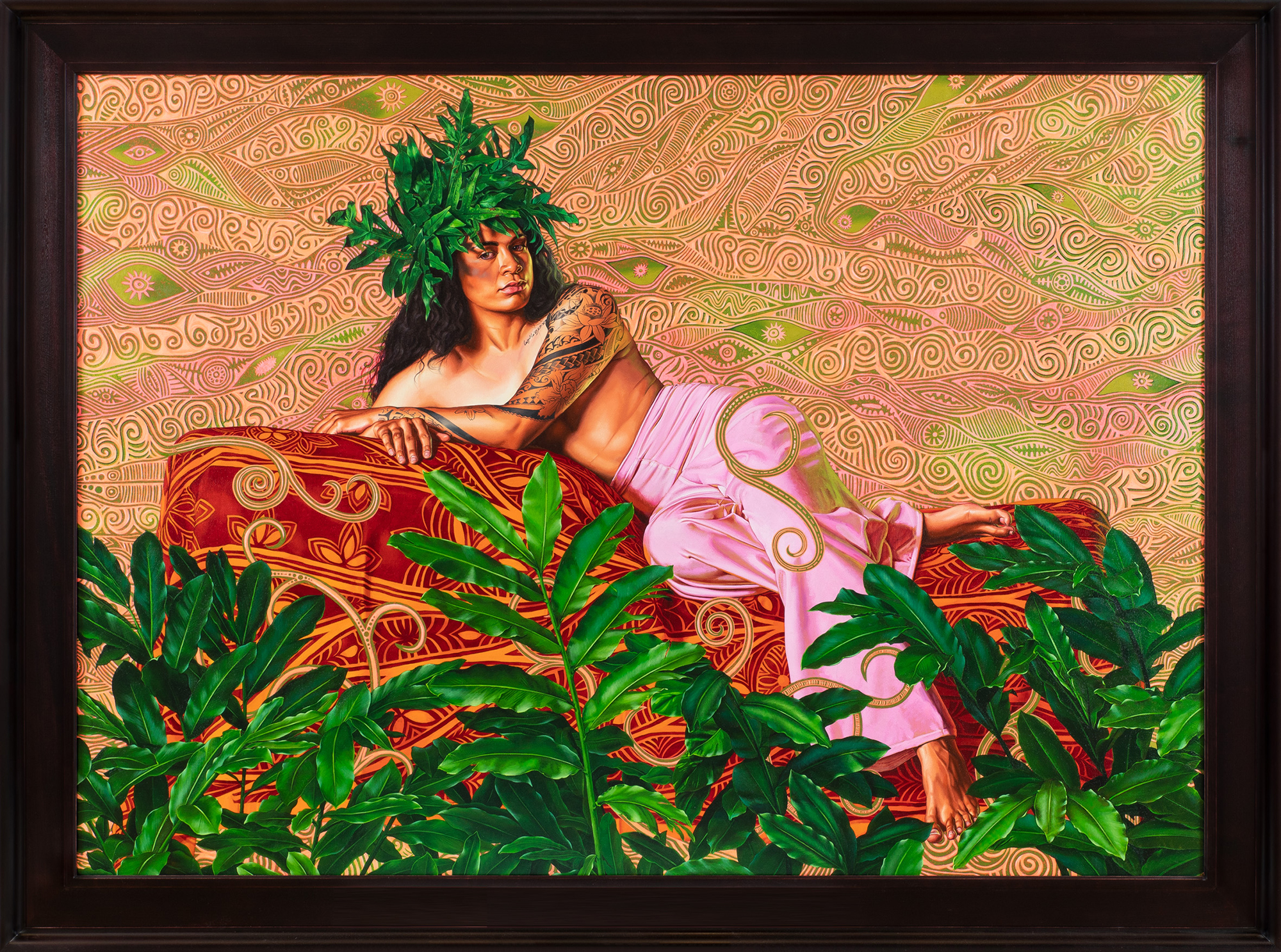ART NEWS
Detailed Portraits of Tahiti’s Third Gender by Kehinde Wiley Challenge Gauguin’s Problematic Depictions
[ad_1]
American artist Kehinde Wiley has unveiled a new series of paintings of Tahiti’s Māhū community, a group of Polynesians classified as a third gender between male and female. Presented at Galerie Templon in Paris, the colorful portrait series challenges a collection of 20th century works by Paul Gauguin, removing elements that Wiley considers problematic and exploitative side effects of colonialism.
Wiley takes issues with Gauguin’s depictions of the Māhū for being unrealistic fantasies that sexually objectify the community for the sake of his White audience back home. The paintings in his “Tahiti” series incorporate tribal patterns, bright colors, plants, and poses inspired by Gauguin’s work, but these distinctive elements were chosen by the models themselves as a form of “self-presentation.”
Portrait of Kea Loha Mahuta,II, 2019 Huile sur lin / Oil on linen 162,5 x 213,5 cm 64 x 84 in. photo : Diane Arques / ADAGP, Paris, 2019
“I am interested in transformation and artifice,” the artist said in a statement. “My newest exhibition will engage with the history of France and its outward facing relationship to black and brown bodies, specifically relating to sexual proclivity. Gauguin features heavily in the imagination of France and her global interface–with that comes an entire history of complicated gazing. I interrogate, subsume, and participate in discourse about Māhū, about France, and about the invention of gender.”
The “Tahiti” exhibition opened on May 18 and will remain on view at the gallery (along with a new video work) through July 20, 2019. Follow Kehinde Wiley on Instagram to see what else he has been up to, including preparing for his upcoming Black Rock Senegal residency.

Portrait of Kea Loha Mahuta, 2019 Huile sur lin / Oil on linen 92 x 78 cm 36 1/4 x 30 3/4 in. photo : Diane Arques / ADAGP, Paris, 2019

Portrait of Moerai Matuanui, 2019 Huile sur lin/ Oil on linen 183 x 153,2 cm 72 x 60 3/8 in. photo : Diane Arques / ADAGP, Paris, 2019

Portrait of Shelby Hunter, 2019 Huile sur lin / Oil on linen 183 x 244 cm 72 x 96 1/8 in. photo : Diane Arques / ADAGP, Paris, 2019

Portrait of Tuatini Manate,III, 2019 Huile sur lin / Oil on linen 180 x 241,5 cm 70 7/8 x 95 1/8 in. photo : Diane Arques / ADAGP, Paris, 2019

Portrait of Tuatini Manate, 2019 Huile sur lin / Oil on linen 114,5 x 92 cm 45 1/8 x 36 1/4 in. photo : Diane Arques / ADAGP, Paris, 2019

The Siesta, 2019 Huile sur lin / Oil on linen 183 x 244 cm 72 x 96 1/8 in. photo : Diane Arques / ADAGP, Paris, 2019
[ad_2]
Source link











